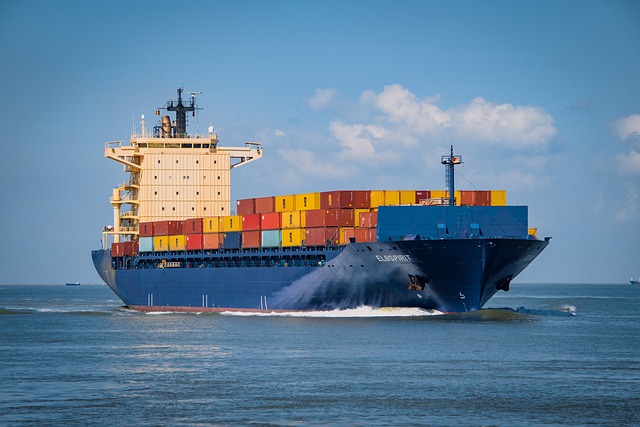Transporting goods is about much more than just pickup and delivery. This type of transportation requires a choice between air, land, and sea. You must also consider how fast each mode of transport is and how much each mode costs.
If you go with road transportation (truck transport), you must decide on either LTL or FTL. This means choosing between a Less Than Truckload or Full Truckload. Full truckload shipments are far more prevalent at almost 50%, while LTL makes up just under 12% of the market share.
Whether you go with FTL or LTL, both offer customized services. Still, it is crucial to understand how each of these freight options works before making a decision.
Table of Contents
Understanding LTL and FTL Shipping
LTL shipping typically ships freight from multiple businesses using a single truck. This option is best for small shipments that weigh between 100 and 5,000 pounds. Since the truck carries goods for several clients, it will likely make a lot of stops for pickups and deliveries.
This means the transit time is longer compared to FTL. While this may seem like a con, remember that LTT is also a more cost-effective solution for businesses that do not need a whole truck to transport items.
FTL shipping means that one business uses one truck for one shipment. This option works well for massive moves weighing 20,000 pounds or more or for items that take up a lot of space. FTL is the faster option because the truck does not have additional stops. However, this convenience comes at a premium cost.
Choosing Between LTL and FTL in 2024
Cost savings is everything in 2024, considering the American economy is unstable at the best of times. You must weigh cost savings with your specific requirements to choose the best shipping option.
The weight of your shipment is the most crucial factor to consider. The LTL option is viable if your shipment falls within the optimal LTL weight range. As soon as your shipment exceeds this weight range, FTL may be the better choice.
As such, LTL is lighter on your pocket because you only pay for the part of the truck that your shipment occupies. Just remember that LTL shipments may include additional charges like liftgate services and special handling. These charges should appear on your quote.
FTL gives you the option of a fixed price for the whole truck. The cost per unit weight is typically higher than that of LTL if your goods do not fill the entire truck space.
FTL offers faster delivery times because it prioritizes your shipment. LTL transit times are longer due to multiple customers, pickups, and deliveries. However, some LTL carriers offer faster deliveries at an additional cost.
When it comes to flexibility, LTL might be the better option. If you can find an LTL carrier that follows a regular route, it will help you streamline logistics. But, with an FTL carrier, you have more control over delivery times and scheduling. This is the preferred option for time-sensitive shipments.
You may find that FTL involves less handling because of the dedicated space compared to LTL. LTL consolidates its space, which means fragile items may be handled more to fit them in properly.
Tips for Choosing Between FTL and LTL
It is important to consider the above factors before choosing between FTL and LTL. Here are some more tips to help you make the right choice.
- Get several quotes: Never settle for the first quote you receive. Request multiple quotes from different companies and compare all services and rates.
- Negotiate contracts: Get ready to negotiate your contracts with both LTL and FTL carriers. If you have consistent shipping volumes, you are in an excellent position to secure better rates and favorable terms.
- Get a freight broker: If you are unsure how to negotiate with shipping carriers, a freight broker can help you. Your freight broker will help you find the best rates and manage the shipping and logistics process.
Stay informed of the latest LTL and FTL trends. This will go a long way in helping you make the best decisions and adapt your logistics strategy when needed.
LTL Shipping in 2024
LTL shipping will continue to boom in 2024. The LTL market’s growth is driven by e-commerce and omnichannel retail.
Moreover, LTL carriers continue embracing technology to offer customers improved efficiency. This means you should look for LTL carriers that provide online tracking, real-time updates, and self-service portals.
LTL shipping is also subject to fuel price fluctuations and ongoing demand. You can also manage costs by staying on top of marketing changes and negotiating flexible pricing.
There may be capacity constraints during peak shipping seasons. This is why it is crucial to build strong relationships with LTL carriers. Doing this will help ensure your shipments are prioritized even during busy periods.
FTL Shipping in 2024
The FTL market is likely to continue to thrive in 2024. If you go with FTL shipping, it is critical to collaborate with your carrier on routes. This will help you reduce empty miles and optimize fuel efficiency.
Furthermore, optimize the load you ship with an FTL carrier. Use all the vertical space you can to make the most of the space you have. This will cut down on costs as well. You can negotiate capped fuel surcharges with your FTL carrier to save even more.
The Future of LTL and FTL
Automation and AI already make a massive difference in the LTL and FLT sectors. Intermodal shipping will likely become more prevalent in the future. There will be a greater focus on real-time tracking and data analytics. Also, both LTL and FTL carriers will focus more on sustainability in 2024 and beyond.
Understanding this evolving landscape and what the future might look like for LTL and FLT carriers will help you make the best decision every time. This will also allow you to build a relationship with your chosen carrier and enjoy stress-free shipping in an ever-changing market.




